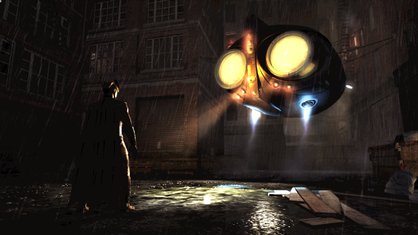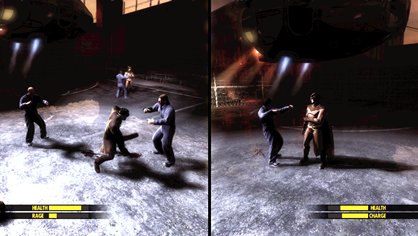There’s one thing authors must have realized by now – nothing they write is ‘unfilmable’. Take William Burroughs’ Naked Lunch; a novel without a plot, banned for its obscene caricatures, provocative language and vivid references to drug addiction and paranoia. Unfilmable, they said, until the movie some 32 years later. Crash, American Psycho, and most recently Patrick Süskind’s Perfume, the story of a killer with an extraordinary sense of smell, have all made it to the silver screen, for better or (more often than not) for the worse.

32 years. That’s nine more than it’s taken Watchmen. Published in 1986, Alan Moore and Dave Gibbons’ graphic novel is considered the greatest of all time, and another unfilmable masterpiece. The prototype ‘serious’ comic book, it tears the superhero concept apart, dropping that ideal of good-versus-evil into a world in which nothing is so clear-cut. Fighting under a banner of justice, its masked avengers include a Nazi sympathizer, a rapist, an impotent recluse, and a borderline psychopath. Troubled? Certainly. Dangerous? Definitely. Immoral? That’s where things start to get hazy.
It’s set in an alternate 1986, the Cold War turning hot, the world pushed to the brink of nuclear Armageddon. The rise and celebrity of costumed vigilantes has only made things worse, their fight against crime causing enough collateral damage to have them outlawed by government and loathed by the people. The birth of a true superman, the godlike Dr. Manhattan, has only magnified tensions between Russia and the US. Now the aging heroes are being arrested, exiled and murdered while the world goes to Hell; unhappy coincidence, or dark conspiracy?
Psychological, experimental and thin on the usual kapow and thwack, it’s not exactly a movie begging to be made. But did that stop them? After two decades of failed attempts, the Hollywood version arrives in March. We’ve seen a preview presented by director Zack “300” Snyder at which he explained: “If I hadn’t taken it on, they [Warner Bros] would have asked the next guy who might have done things their way. They were like, ‘Obviously, it can’t be set in 1986, can’t feature Nixon, can’t have sex and violence. It’s a PG-13.” So he put up his dukes and, after “several months of pain”, got the go-ahead for his more mature rendition. To quote the trailer: “rated R for strong graphic violence, sexuality, nudity and language.”

Alan Moore’s had no involvement, of course, his disdain for the movies of From Hell, V For Vendetta and The League Of Extraordinary Gentleman legendary. What we’ve seen of Snyder’s effort is beautiful and evocative, half real like his Dawn of the Dead remake, half virtual like 300. Despite a bad choice of alternate ending and increased action, it’s as faithful a version as you could realistically imagine, swinging to counterculture classics like Bob Dylan’s Desolation Row. But it’s more youthful and virile than the book, translated into a cinematic language and hacked into pieces to be viewed separately on DVD and the web. It upholds Moore’s suspicion: no movie can entirely get it right. And if that’s the case, what chance has the videogame got?
Weekly digests, tales from the communities you love, and more


